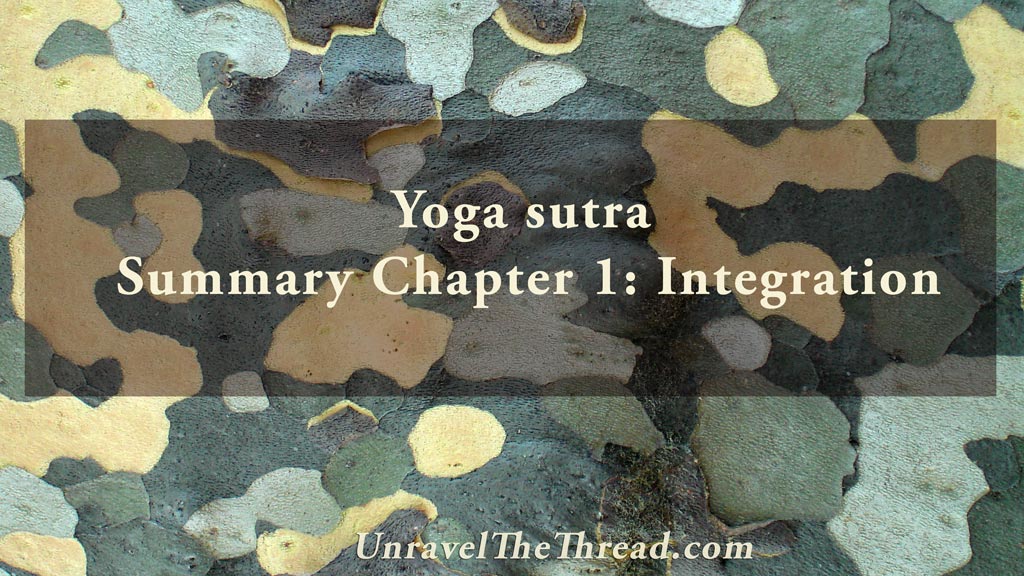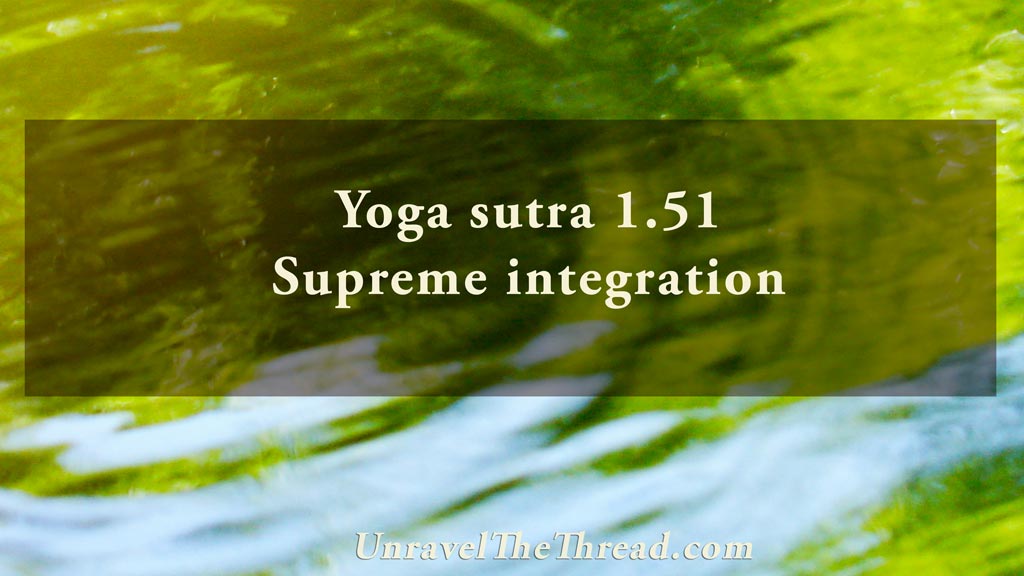
1.50 Impressions of absolute true wisdom
February 28, 2020
Review of Yoga Sutra chapter 1: Integration
March 13, 2020
1.50 Impressions of absolute true wisdom
February 28, 2020
Review of Yoga Sutra chapter 1: Integration
March 13, 20201.51 Supreme integration


1.51 When all impressions dissolve, the highest level of integration emerges (nirbija samadhi) when all identification ceases and only consciousness, self-contained, pure and liberated remains.
Every step along the path leads towards liberation. This is the final step. When the remaining subconscious impressions (samskaras) are removed, there are no seeds for future actions. Moreover, a meditation object is no longer needed. Thus, this is the level of integration called beyond seed or beyond objects, nirbija samadhi. This gradual process of dissolution of all impressions does not happen overnight. It is a process that grows incrementally according to what is within reach without strain or struggle through continuous, sincere and uninterrupted practice (abhyasa) combined with increasing independence from all opinions and attachments (vairagya). The yogini abides in her true nature, consciousness, free from the burdens brought about by misidentification. A gentle, loving attitude to every task, every moment and every interaction seems to be more productive than a forceful approach, because the former attitude is more conducive to releasing the illusion of control while the latter generates more impressions to be stored in memory. Perhaps this is the reason Patañjali says in Chapter Two that releasing the illusion of control (ishvara pranidhana) results in integration (samadhi). This gradual journey of removing impurities and increasing clarity is not about bringing external elements into the self. Instead, it is a process of fine-tuning your sensitivity and cultivating your natural inner stillness and inner silence with the curiosity that might reveal the obvious yet elusive essence of existence.
You may try this approach to practice meditation: Start by giving yourself permission to let go of the world outside in order to dive into your internal world. Then, get relaxed, stable and comfortable. Choose a focal object, internal or external, something inspiring and interesting enough to hold your attention. Continue by concentrating with gentle firmness on your focal object. Maintain your focus with patient persistence and release everything else. Refine your focus towards the subtlest aspect of the meditation object. And then, loosen the grip of your attention as much as possible while remaining focused. Eventually, allow the subtlety of the essence of the meditation object to lead you to experience the aliveness that you are. At this stage, even the sense of “I” dissolves, so that your “I am” experience merges into undifferentiated being. What is the experience of being, when you release all extraneous activity? Does it become easier to notice subtler aspects of your experience and of your own being? What is the experience of releasing your sense of identity?
As usual, one more way of exploring the meaning of this sutra is by chanting it.
You can choose to chant it in its traditional form with some of the words coming together:
1.51 tasyāpi nirodhe sarvanirodhānnirbījaḥ samādhiḥ
तस्यापि निरोधे सर्वनिरोधान्निर्बीजः समाधिः ॥५१॥
Another option is to chant each word in the sutra individually:
- tasya
- api
- nirodhe
- sarva
- nirodhāt
- nirbījaḥ
- amādhiḥ
Unravel the thread is now available as a book!
If you find Simple-Yoga.org and Unravel the thread useful, consider supporting my labor with a donation, you may also donate using PayPal or Venmo. Thank you!